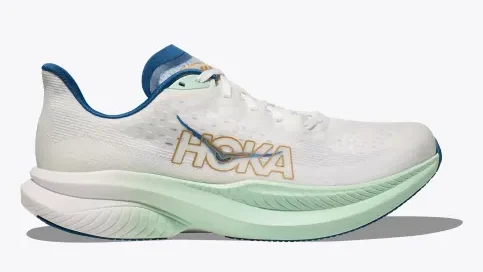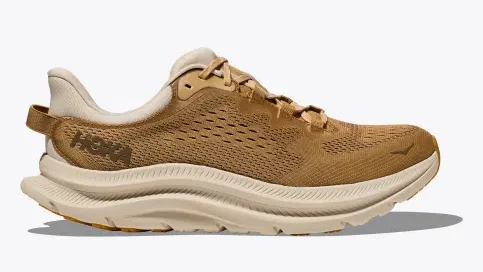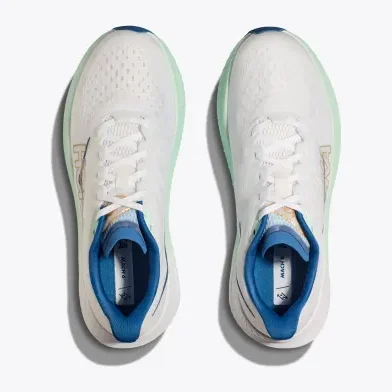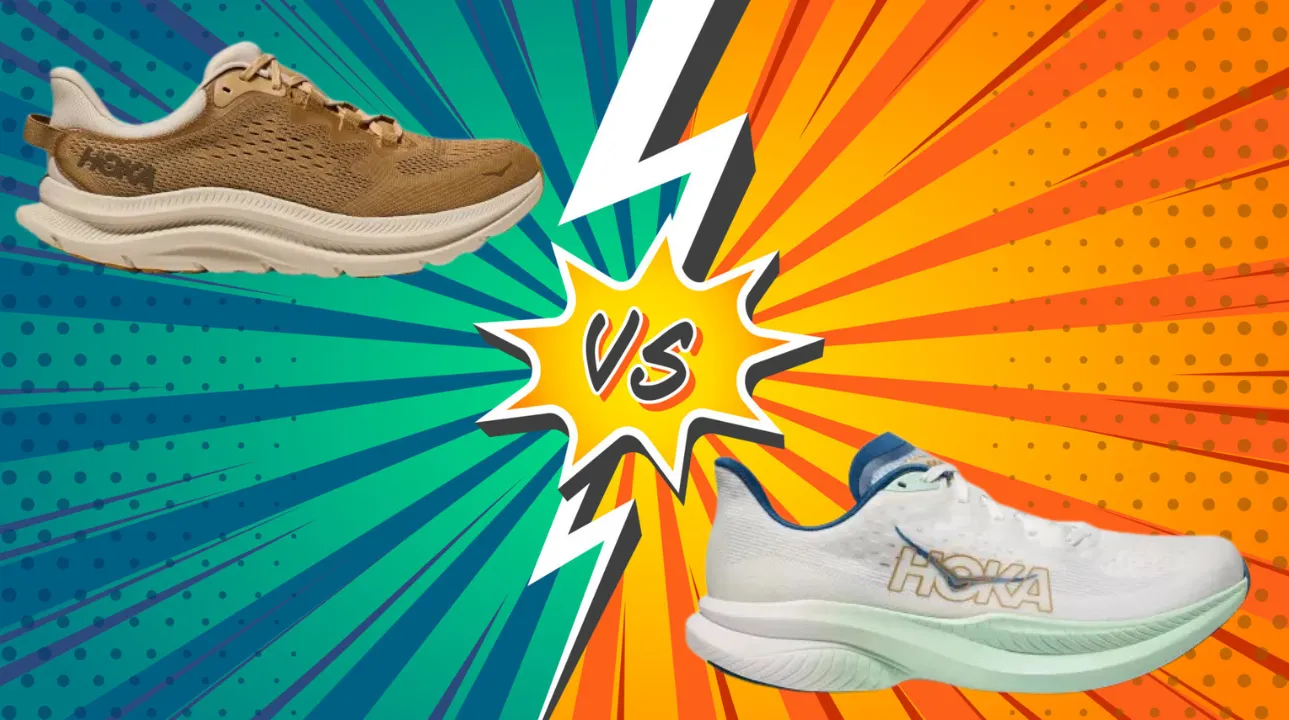Are you in the market for a new pair of running shoes and torn between the Hoka Mach 6 and the Hoka Kawana 2? You’re not alone. Both shoes offer unique features and benefits, making the choice challenging for many runners.
In this in-depth comparison, we’ll break down the key differences between these two popular Hoka models, helping you decide which one best suits your needs. From materials and durability to performance in various activities, we’ve got you covered. Let’s lace up and dive in!
Key Takeaways:
- The Hoka Mach 6 excels in speed and responsiveness, making it ideal for performance-oriented runners and races. Its lightweight design and firm cushioning promote efficient, fast-paced runs with excellent energy return.
- The Hoka Kawana 2 shines in versatility, offering a balance of cushioning and responsiveness. It’s suitable for various activities, from easy runs to all-day wear, making it a great all-around shoe.
- For walking and standing all day, the Kawana 2 takes the lead with its plush cushioning and wider base. It provides superior comfort and stability for extended periods on your feet.
- Both shoes offer neutral stability, but the Mach 6’s lower profile provides inherent stability through ground feel, while the Kawana 2 achieves stability with a wider base and balanced cushioning.
- At the same price point of $140, both shoes offer excellent value. The Mach 6 is perfect for serious runners, while the Kawana 2 is ideal for those seeking a versatile, do-it-all shoe.
Comparison Table between Hoka Mach 6 and Hoka Kawana 2:
| Feature | Hoka Mach 6 | Hoka Kawana 2 |
|---|---|---|
| Launched In | 2023 | 2023 |
| Stability | Neutral | Neutral |
| Flexibility | Moderate | Moderate |
| Sizing | True to size | True to size |
| Weight | 8.20 oz | 11.10 oz |
| Cushion | Responsive to Balanced | Responsive to Balanced |
| Outsole | Strategic rubber coverage | Gum rubber |
| Midsole | Supercritical foam | Speckled Regrind |
| Upper | Creel jacquard | Single-layer mesh |
| Retail Price | $140 | $140 |
Features Comparison:
1. MATERIAL: outsole, insole, upper sole
The Hoka Mach 6 features a strategic rubber outsole coverage, providing durability in high-wear areas while keeping the overall weight down. Its supercritical foam midsole offers a responsive and lightweight ride.
The upper is made of creel jacquard, a breathable and supportive material that adapts to your foot shape.


In contrast, the Hoka Kawana 2 boasts a gum rubber outsole, known for its excellent traction and durability. The midsole uses speckled Regrind foam, which provides a balance of cushioning and responsiveness.
The upper is constructed with a single-layer mesh, offering breathability and a more relaxed fit compared to the Mach 6.
2. Durability:
When it comes to durability, both shoes are built to last, but they have different strengths. The Mach 6’s strategic rubber placement on the outsole targets high-wear areas,
Potentially extending the shoe’s lifespan for runners who tend to wear out specific parts of their soles quickly. The jacquard upper is also quite resistant to wear and tear.
The Kawana 2, with its full gum rubber outsole, may have a slight edge in overall durability, especially for users who put in a lot of miles or use the shoes for various activities beyond running. The single-layer mesh upper, while breathable, might be slightly less durable than the Mach 6’s jacquard material in terms of resistance to abrasion.
3. Fit:
The Hoka Mach 6 offers a more performance-oriented fit. Its streamlined collar foam package and dual internal gusset work together to provide a secure, locked-in feel. The anatomical tongue adds to the overall comfort and fit precision. This shoe is ideal for those who prefer a snug, race-ready fit.
On the other hand, the Hoka Kawana 2 provides a more relaxed fit, making it suitable for a wider range of foot shapes. The single-layer mesh upper offers more give, while the internal bootie construction ensures a comfortable, sock-like fit. The eye row gillies allow for customized lacing, accommodating various foot volumes.
4. Cushioning:
Cushioning is where these two shoes start to show their distinct personalities. The Mach 6 features a supercritical foam midsole, which provides a responsive and energetic feel.
It’s designed for a low-profile cushion bed that keeps your foot closer to the ground, promoting a more efficient push-off. This makes it ideal for faster-paced runs and races.


The Kawana 2, while also responsive, leans slightly more towards the cushioned end of the spectrum. Its speckled Regrind midsole is designed to offer protective cushioning while maintaining responsiveness.
This balance makes it versatile for both training runs and everyday wear, offering more comfort for longer periods on your feet.
5. Stability:
Both the Mach 6 and Kawana 2 are classified as neutral shoes, meaning they don’t have additional stability features for overpronators. However, they approach stability differently.
The Mach 6’s firmer, low-profile cushioning provides inherent stability by keeping your foot closer to the ground, enhancing proprioception and control.
The Kawana 2, despite its higher stack height, maintains stability through its wider base and the nature of its Regrind midsole foam. This design provides a stable platform without sacrificing cushioning, making it suitable for a variety of foot types and running styles.
6. Value for Money:
At the same retail price of $140, both shoes offer excellent value but for different types of users. The Mach 6 provides great value for performance-oriented runners looking for a versatile shoe that can handle both training and race day. Its durability and versatility make it a worthy investment for serious runners.
The Kawana 2 offers outstanding value for those seeking a do-it-all shoe. Its durability, comfort, and versatility across various activities (running, training, and lifestyle wear) make it a great choice for users who want one shoe to meet multiple needs.
Performance Comparison:
1. For Walking:
For walking, the Hoka Kawana 2 takes the lead. Its more substantial cushioning and wider base provide excellent comfort and stability for long walks or all-day wear.
The gum rubber outsole offers superior traction on various surfaces, enhancing safety and comfort during walks. The relaxed fit of the Kawana 2 also allows for natural foot swelling that can occur during prolonged walking.
The Mach 6, while still comfortable for walking, is designed more for running efficiency. Its firmer, more responsive cushioning might feel less plush for extended walking sessions. However, its lighter weight could be appreciated during longer walks.
2. For Running:
When it comes to running, the Hoka Mach 6 shines brightest. Its lightweight design (8.20 oz) and responsive supercritical foam provide an energetic, fast feel that’s perfect for tempo runs and race day.
The streamlined fit ensures your foot stays locked in place, reducing in-shoe movement and enhancing efficiency. The 5mm heel-to-toe drop promotes a natural stride and quick turnover.
The Kawana 2, while heavier (11.10 oz), still performs well for running, especially for everyday training runs. Its balanced cushioning provides comfort for longer distances, making it a great choice for recovery runs or runners who prefer more cushioning.
However, it may feel less snappy and responsive compared to the Mach 6 during faster-paced runs.
3. Standing All Day:
For those who spend long hours on their feet, the Hoka Kawana 2 is the better choice. Its plush, balanced cushioning provides all-day comfort, while the wider base offers enhanced stability when standing for extended periods. The relaxed fit of the upper allows for natural foot swelling that often occurs during prolonged standing.
The Mach 6, with its firmer, more responsive cushioning, may feel less comfortable for all-day standing. Its performance-oriented fit, while great for running, might feel constraining over many hours of standing. However, its lightweight nature could be appreciated by some for reducing overall fatigue.
4. Plantar Fasciitis:
For runners dealing with plantar fasciitis, both shoes offer benefits, but the Hoka Kawana 2 might have a slight edge. Its more substantial cushioning provides better shock absorption, reducing stress on the plantar fascia.
The balanced nature of its cushioning offers support without sacrificing comfort, which can be crucial for managing plantar fasciitis pain.
The Mach 6, while still supportive, has a firmer feel that might not be as comfortable for some plantar fasciitis sufferers. However, its responsiveness and lower profile could benefit runners whose plantar fasciitis is aggravated by too much cushioning or instability.
As always, individual experiences may vary, and it’s best to consult with a podiatrist for personalized advice.
Conclusion:
Choosing between the Hoka Mach 6 and Kawana 2 ultimately depends on your specific needs and preferences.
The Mach 6 is the go-to for performance-oriented runners seeking a lightweight, responsive shoe for faster runs and races. If you prioritize speed and efficiency, this is your shoe. The Kawana 2, on the other hand, excels as a versatile, all-around performer.
It’s ideal for those who want a comfortable shoe for various activities, from easy runs to all-day wear. Consider your primary use, foot type, and performance goals to make the best choice for your needs.

